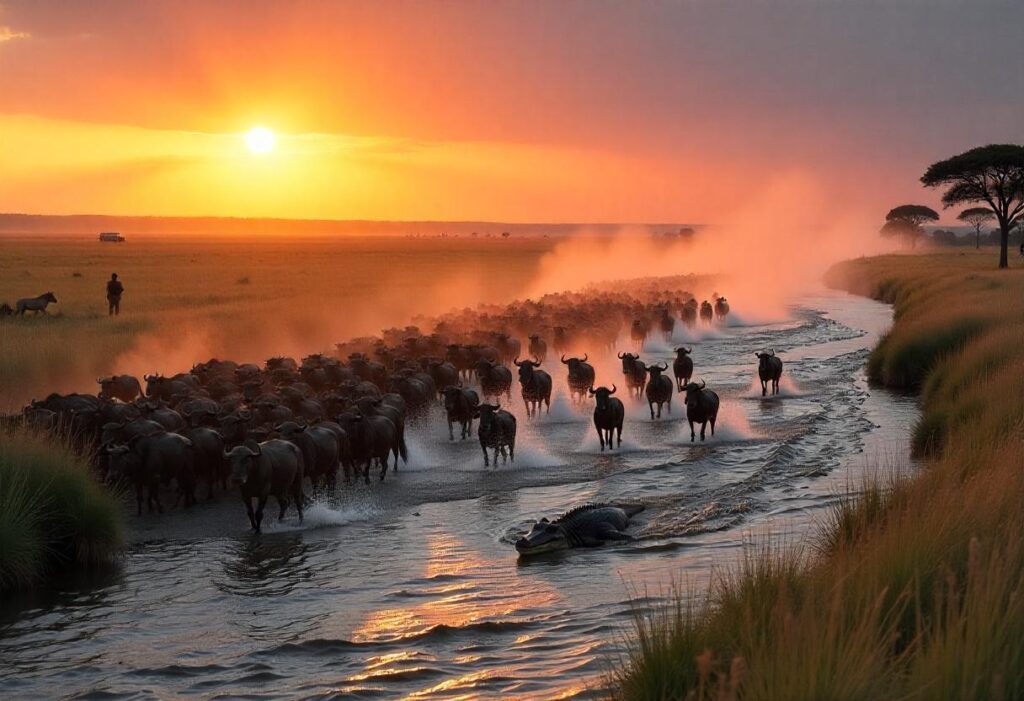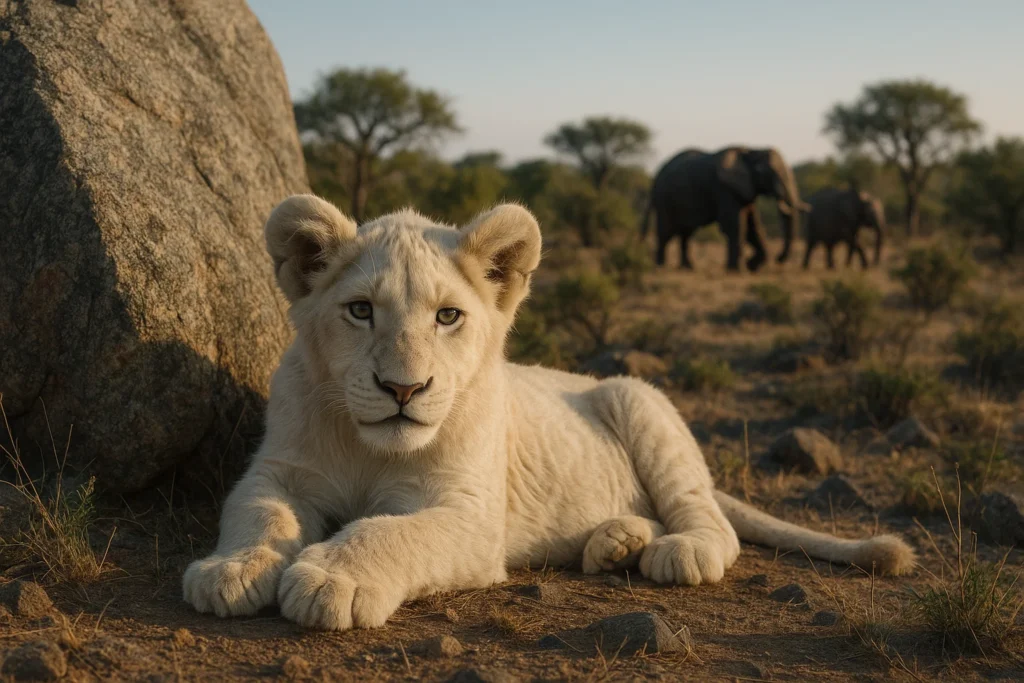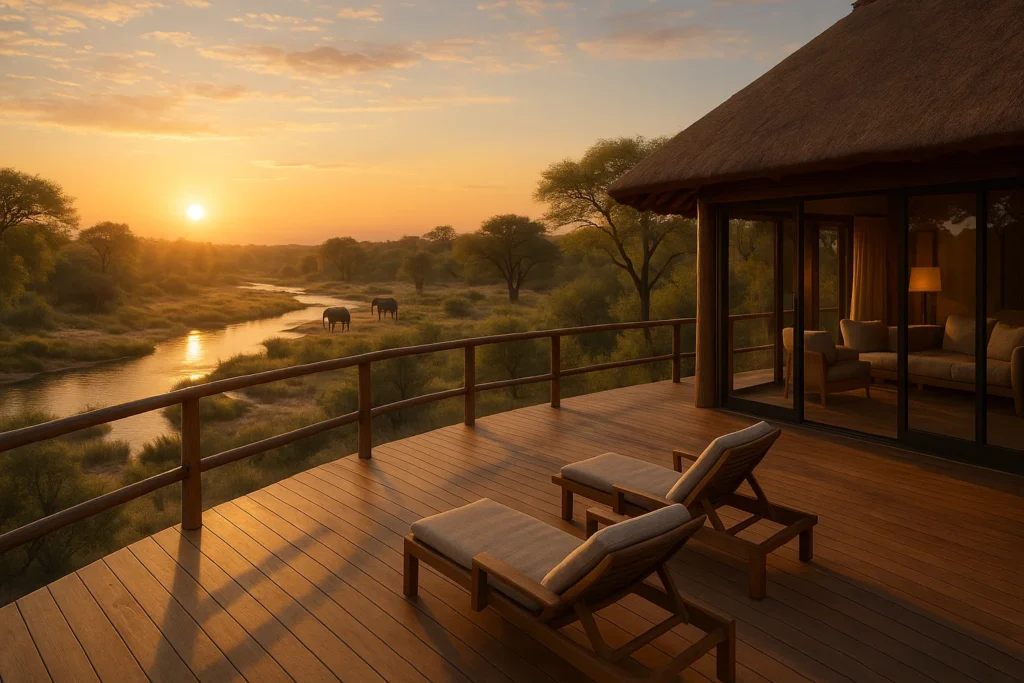Widely regarded as one of the greatest natural spectacles on Earth, the Great Migration in Maasai Mara is an experience that tops many safari bucket lists. Every year, more than 1.5 million wildebeest, accompanied by zebras and gazelles, cross from Tanzania’s Serengeti into Kenya’s Maasai Mara in search of greener pastures. This epic journey is as dramatic as it is awe-inspiring—especially during the perilous river crossings.
In this guide, we’ll cover everything you need to know to witness the Great Migration in Maasai Mara: from the best months and locations to what to expect on the ground.
When does the Great Migration reach the Maasai Mara?
July to October: the peak migration months in Kenya
The herds typically arrive in the Maasai Mara between late June and early July, depending on rainfall. From July through October, huge concentrations of wildebeest and zebras move across the Mara plains, often crossing the crocodile-infested Mara and Talek Rivers in dramatic scenes.
By November, most animals begin their journey back to the Serengeti. However, due to climate variability, exact timings can shift slightly from year to year.
Migration month-by-month
- June–early July: First wave of herds approaches the Mara from the north Serengeti
- Mid-July–August: Peak river crossings at the Mara and Talek rivers
- September: Herds graze across the central Maasai Mara; crossings continue
- October: Final weeks of the migration season in Kenya
Best places to witness river crossings
Mara River
The most iconic location for migration sightings, the Mara River offers front-row seats to the drama of life and death. Watch as hundreds (sometimes thousands) of wildebeest plunge into the river, while crocodiles lie in wait and big cats stalk from the banks.
Talek River
Less crowded than the Mara River, the Talek River also sees crossings—especially in years with higher rainfall. Staying in camps near the Talek area can offer more intimate viewing opportunities.
Northern conservancies
Private conservancies like Mara North or Olare Motorogi border the national reserve and offer excellent sightings with fewer vehicles and more exclusive access.
How to see the migration without the crowds
- Book early: Camps and lodges during migration season fill up fast—some a year in advance.
- Go with experienced guides: Seasoned guides know animal behavior and river patterns, increasing your chances of a memorable encounter.
- Choose private conservancies: These offer fewer vehicles, flexible game drives, and access to exclusive areas.
- Avoid weekends and peak holidays: Aim for weekdays when domestic tourism is lower.
What to expect during the Great Migration
The raw drama of the wild
Expect intense scenes: stampeding herds, river chaos, predator ambushes, and frantic escapes. It’s nature at its most primal.
Emotional highs—and waiting periods
While crossings are unforgettable, they require patience. You may spend hours waiting at a riverbank for a herd to decide to cross.
Crowds and excitement
This is high season for tourism. Some spots get congested. Choosing private areas or planning shoulder-season travel (early July or late October) can help reduce this.
Add-on experiences to enhance your migration safari
Hot air balloon safari
Soar above the action at dawn with a hot air balloon ride over the Mara. It’s a peaceful contrast to the ground-level intensity, followed by a champagne breakfast in the bush.
Cultural visits
Take time to visit a Maasai village to learn about the communities who coexist with wildlife. These encounters add cultural depth to your safari experience.
Combine with the Serengeti
For a broader migration experience, combine Kenya’s Maasai Mara with northern Serengeti in Tanzania, where the herds spend the earlier months.
Final tips for planning your Great Migration safari
- Travel with a reputable safari operator with migration experience
- Bring binoculars and a long-lens camera for river crossings
- Dress in neutral tones and pack for both chilly mornings and warm afternoons
- Be flexible—nature has its own timing
Witnessing the Great Migration in Maasai Mara is a once-in-a-lifetime adventure. With the right timing, location, and guidance, it’s an experience that leaves travelers forever changed.
FAQs
Both offer unforgettable views, but Maasai Mara is ideal for river crossings between July and October, while Serengeti covers the earlier and later stages.
Yes. A trained guide improves your chances of catching a river crossing and navigating the bush safely and respectfully.
A minimum of 3 nights is recommended to increase your chances of seeing a river crossing or large herd movement.
No. Crossings are unpredictable and depend on animal behavior, weather, and water levels. Patience is key.
Absolutely. Besides wildebeest and zebras, the Mara is home to lions, elephants, cheetahs, crocodiles, and countless bird species.






